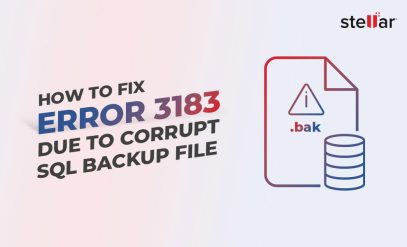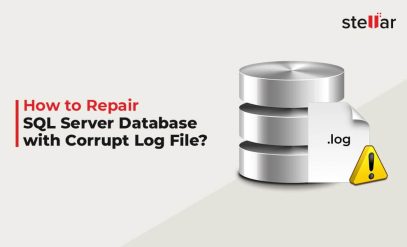|
Summary: Indian cybersecurity agencies have recently warned against Royal Ransomware, which is attacking critical sectors in India and individuals, asking for a ransom to decrypt the data and not leaking it to the public domain. Learn how to protect your business from ransomware and solutions to repair and restore your files. |
|---|
Table of Content:
- How Does Royal Ransomware Work?
- Common Signs of a Royal Ransomware Attack
- How to Safeguard Your Organization from Royal Ransomware?
- Restore Data After Royal Ransomware Attack
Ransomware attacks have become common in today’s digital age. Over the few years, cyber threats have significantly increased, with ransomware being one of the most prevalent and dangerous types.
Recently, the Indian cyber security agency warned against the “Royal ransomware” attack, which is targeting critical sectors such as education, healthcare, communications, and individuals.
The threat actors or cybercriminals behind the Royal ransomware are using a technique referred to as “double extortion,” where they not only encrypt the victim’s data but also threaten to release it publicly if their victim does not pay or fails to pay the ransom. The ransom is asked in cryptocurrency, typically Bitcoin, which provides a greater degree of anonymity and makes it hard to trace.
How Does Royal Ransomware Work?
Similar to many other ransomware attacks, Royal ransomware attacks also begin with a phishing email, aimed at tricking unsuspecting employees into clicking on a malicious link or downloading an infected attachment.
Once the ransomware-infected attachment is downloaded and clicked, it quickly installs on the victim’s computer and spreads to the organization’s network, encrypting files and rendering them inaccessible.
The threat actors then ask for a ransom payment in exchange for the decryption key and not leaking personal data in the public domain via a ransom note. This puts more pressure on the victim to pay the ransom.
In many cases, the ransom amount is substantial, based on the targeted organizations or individuals and the potential value of the compromised data.
However, paying the ransom does not guarantee that attackers will decrypt the data or send the decryption key.
In some instances, we have seen attackers taking the ransom and not providing the decryption key.
Common Signs of a Royal Ransomware Attack
Below we have discussed some of the most common signs that you can watch for to detect if your system or network is compromised by the Royal ransomware.
1. Unusual File Extensions
Similar to any other ransomware, Royal ransomware also generates files with unusual extensions and adds the unfamiliar extension at the end of the encrypted filename as well. This makes it difficult for the victim to access their data without the decryption key.
2. Ransom Note
Royal ransomware attack also leaves a ransom note on the infected system in plain text or HTML format. You can find the note in the same folder where the encrypted files are located. This ransom note contains instructions on how to pay the ransom and get the decryption key.
3. Slow System Performance
Royal ransomware attacks may also lead to noticeable performance issues on the infected system as the encryption process requires a significant amount of processing power. This causes the system to respond slowly and reduces the overall system efficiency.
4. Unusual Network Traffic
Royal ransomware generates a significant amount of data during the encryption process, which is transmitted to the attacker’s servers. This leads to a sudden increase in network traffic, which is an early warning sign of a Royal ransomware attack.
5. Suspicious User Account Activity
Unusual user account activity is also an indicator of ransomware attacks where attackers create new user accounts with elevated/administrator privileges. This helps the attackers maintain persistent access to the infected system and network.
6. Altered System Configuration
Royal ransomware attackers may also make some significant changes to your system configurations, such as:
- Disable antivirus software
- Modify firewall settings
- Delete system restore points, etc.
How to Safeguard Your Organization from Royal Ransomware?
A regular backup can help reduce the adverse impact of a Royal ransomware attack on the organization.
Backing up critical data allows organizations and individuals to restore their data and files to a new system without having to pay the ransom to the attackers.
It is also important to choose the right backup solution for swift data recovery after a ransomware attack.
The 3-2-1 backup rule is one of the most effective ways to safeguard data against a Royal ransomware attack. The 3-2-1 backup rule states,
- Create at least three backup copies of critical data
- Store the backup on two different types of media, such as hard drive tape, or SSD
- Store at least one copy offsite.
This will help organizations restore their data from unaffected media even if a ransomware attack compromises one of the storage media.
It is also important to check or test the backup and restoration process every once in a while, to ensure that backups are working as intended.
Conclusion: Restore Data After Royal Ransomware Attack
The Royal ransomware threat is an ongoing concern for many organizations and businesses across the globe. The blog shares the potential risk posed by the Royal ransomware, its common signs, and discusses the role of backup in ransomware recovery.
If you or your organization is one of the victims of Royal ransomware, we recommend you disconnect the system from the network immediately and restore data from the backup to a new system.
However, if the backup isn’t available or obsolete, you can try the Stellar file repair software to try and fix your SQL database, documents, Exchange database (.edb), and other files. If the software does not work or restore the files, you can opt for the Stellar ransomware data recovery service and Stellar file repair service.
Stellar Data Recovery, a leading data care company with over 30 years of expertise, offers a range of file repair and ransomware data recovery services to help businesses repair and restore their files or data damaged or encrypted by ransomware attacks, including Royal ransomware.









